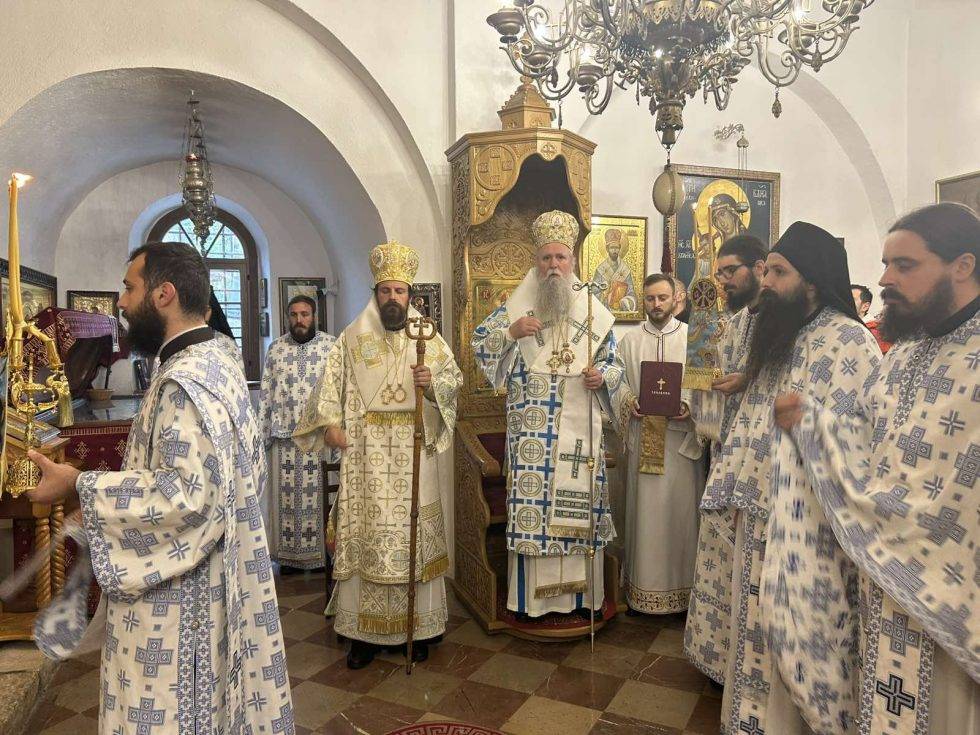
Metropolitan Joanikije: The beauty of our temples is directly related to the decisions of the Seventh Ecumenical Council
His Eminence Archbishop of Cetinje and Metropolitan of Montenegro and the Littoral Joanikije on the twentieth Sunday after Pentecost, October 26, 2025, when we celebrate the Holy Fathers of the Seventh Ecumenical Council, served the Holy Hierarchical Liturgy in the Cetinje Monastery, with the concelebration of His Eminence Bishop Paisios of Diocletia, the clergy and monastics of the Metropolis of Montenegro and the Littoral.
In his archpastoral sermon, Metropolitan of Montenegro and the Littoral Joannikius referred to the decisions of the Seventh Ecumenical Council, held in 787 in Nicaea, which, although this had been the practice before, confirmed and emphasized the importance of holy icons and the decoration of temples. He substantiated how important this is for us Christians by the fact that our ancestors, in ancient times, considered a temple not complete until it was frescoed, regardless of the fact that it was architecturally completed, consecrated, and that services were being held in it according to established practice. He cited examples of our temples that were frescoed after they were completed and consecrated.
"Thus, Studenica was built by Saint Simeon Nemanja, and the frescoes were painted only by Saint Sava. Visoke Dečani was built by Saint King Stefan of Dečani, and the frescoes were painted only during the reign of Emperor Dušan. The Piva Monastery was frescoed only some 20 or 30 years after its consecration. Therefore, they considered that even in times of freedom, but also in the most difficult times, such as the time of the construction of the Piva Monastery, the difficult Turkish slavery, that the temple was not finished until the frescoes were painted. And when the paintings were destroyed somewhere, our ancestors tried in every possible way, breaking away from their own lips, to restore the beauty of the temple of God even in the most difficult times," the Bishop spoke, and in support of this, he cited the example of the Morača Monastery, where few frescoes from the Nemanjić era remain, which was so beautifully decorated during the reign of Saint Basil of Ostrog.
The Church of the Holy Cross in Ostrog, built by the monks of Ostrog, was also frescoed during the time of Saint Basil. Although it is a cave church, it also had to be decorated, all modestly, we can even say poorly, but its frescoes are rich and in some places reach the beauty of the Nemanja churches.
The Metropolitan continued by pointing out that this is the origin of the desire and struggle to have every church frescoed, emphasizing that the state ignores this tradition, stating that it cannot because they are cultural and historical monuments.
"Every country should respect its tradition, its lore, its history. Let's see how it was in history. What would have become of many of our holy places if they had not been renovated, if they had not been repainted, if the old paintings had not been preserved. And everything that was old was preserved, and everything that was destroyed, and everything that is on earth is being destroyed, thank God, was repainted," said the Archbishop of Cetinje.
According to him, today we are spiritually and culturally far behind the Fathers of the Seventh Ecumenical Council.
"They are much ahead of us, even though they lived a long time ago, but in a spiritual and cultural sense they are much ahead of us and we need to learn from our tradition, from our tradition and history, to see how it was. Let us learn and only then talk. We respect the laws, there is a lot of extremely significant, important things that are still in today's laws, but if a state has sovereignty, it should also pass laws in accordance with its tradition, with the best that is in its tradition. Not to neglect its tradition and its history, memory," the Metropolitan of Montenegro and the Littoral emphasized, adding that only if we are rooted in our tradition, when we respect it, do we know who we are and no one can humiliate us and do whatever they want.
Congratulating this great holiday, His Eminence Archbishop of Cetinje and Metropolitan of Montenegro and the Littoral, Mr. Joanikije, concluded: "Happy this wonderful, magnificent holiday! It is simply impossible to say everything about how significant this holiday is, but you know, the beauty of our churches is directly related to the decisions of the Seventh Ecumenical Council and the fathers who made them in the difficult times of iconoclasm. It was not easy, many people died defending this ancient Christian tradition. To health and salvation, to many summers!"
His Eminence Bishop of Diocletia, Mr. Paisius in his sermon spoke about man's relationship with God, emphasizing that, in accordance with the freedom that God gave to man, all human actions are motivated by different goals and causes:
"For God, something completely opposite applies. Every idea of His and every action is motivated by love and pure and undefiled truth. Therefore, very often this relationship of man towards God is also changeable, sometimes man turns to God out of selfishness, and sometimes out of gratitude. Sometimes man turns to God hypocritically, and sometimes sincerely and with love. And God always, whatever man's relationship towards Him, His personal relationship towards man is always unchangeable, always loving to man, and when man sins, then it is especially seasoned with mercy and condescension."
According to him, God's relationship with man begins directly and immediately. Adam and Eve, the first created people, looked at God in Paradise as they looked at each other, and talked to Him, and then later, when they committed the first sin, that relationship was somehow disrupted. From the moment Adam and Eve, because of their sin, tried to hide from the face of God, God changed something in His way of relating to man:
“He was still loving to man, but God decided to apply a certain pedagogy, not punishment but a certain pedagogy, in order for man to correct himself. From that moment on, man was no longer allowed to see the face of God. And as the Old Testament prophets testify, man was not allowed to see the face of God and remain alive. And this relationship throughout the entire Testament is seen to be absolutely indirect. God appears to Moses in a burning bush, in a pillar of cloud above the tabernacle, then leads God’s chosen people in the form of a pillar of fire, testifies to His presence by giving water from a rock, which gives food (manna) from heaven…”
He stated that one of the The best examples of how God appears to man, so that he can see and hear and touch Him, but still transcend the laws of nature or, as we would say in modern times, the laws of physics, such as God appearing on Mount Horeb to the prophet Elijah, where it is said that before God's appearance, there was a strong and stormy wind, then an earthquake, then fire:
"He nevertheless appears to man in that light breeze - which is to say that God always seeks that measure of man to appear to him. So that man, during the appearance of God, can also approach Him and touch Him and feel Him. And all this intermediary relationship lasts until the appearance of the Son of God, until the incarnation of the Second Person of the Holy Trinity from the Most Pure Virgin Mary, when again this relationship between God and man becomes direct."
“And so the Holy Fathers established that the image of God and the image of the saints of God, of all those who have been worthy of the Kingdom of Heaven, can be depicted on icons and frescoes, and in this way Christians did not worship wood, gold or silver and any other material from which the icons were made, but they worshiped the One who is depicted on them.”
Recalling that icons manifested their miraculous power in various ways, the Bishop emphasized that this is why we still remember today the Fathers of the Seventh Ecumenical Council who, after the iconoclastic heresy arose, when many, both elders and people, sided with iconoclasm and destroyed icons and frescoes, ultimately condemned such acts, commanding us to glorify icons and give them honor. During this heresy, which lasted for more than a century, many frescoes and icons were destroyed, and the much greater damage was that many members of the Church lost their eternal life.
“Today we remember that victory over iconoclasm, which took place in the eighth century and later finally in the ninth, when respect for icons and the image of God depicted on them was restored. From this we can draw the following lesson: that even those things that were not established in the Church from the beginning, and later during the life of the Church, during its development, appear, are not automatically bad, although some probably are. But whenever something like this appears in the Church, we should make an effort to listen to what God’s judgment is about it, and not to try to implement our own judgment by grace or force, as happened during this period of iconoclasm. For this reason, we pay honor and glory to all those Holy Fathers, both monks and laypeople, who fought for the true faith and for true and true dogmas. And to our God, who is wonderful in His Saints, be glory forever and ever. centuries, amen”, said His Grace Bishop Paisios of Diocletia.
Vesna Dević
PHOTOS
RELATED ARTICLES
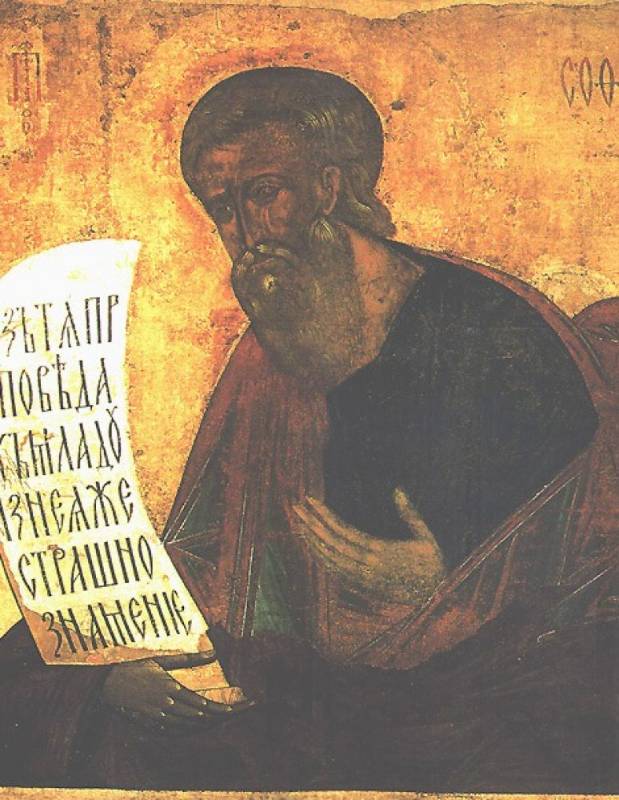
Calendar for December 16 Holy Prophet Zephaniah
A native of Gora Savarat, from the tribe of Simeon. He lived in the 7th century...
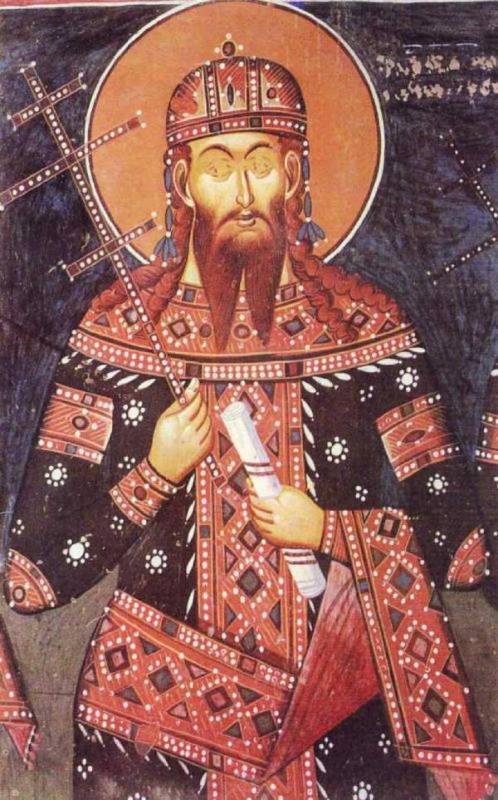
Calendar for December 15 Saint Emperor Uroš
The only son of the Serbian Emperor Dušan and Empress Jelena, sister of...
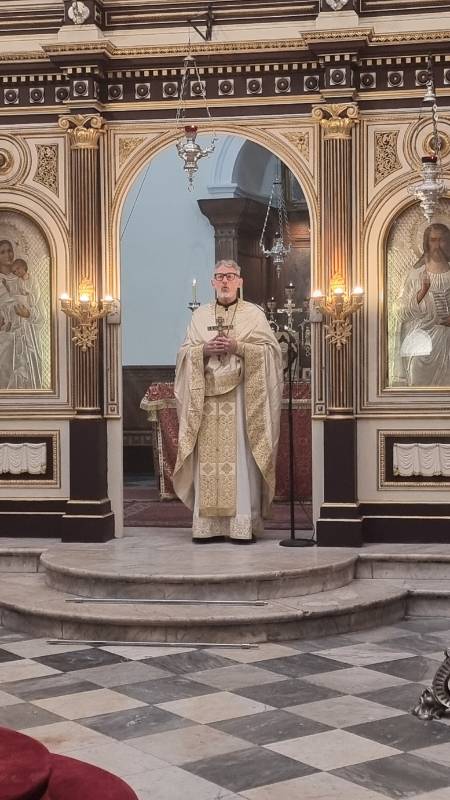
FATHER NEMANJA KRIVOKAPIC: BY PUTTING FORM ABOVE ESSENCE, ALL BECAME HYPOCRITES SIMILAR...
“Whenever we think about the miracles performed by the Lord, such as the...


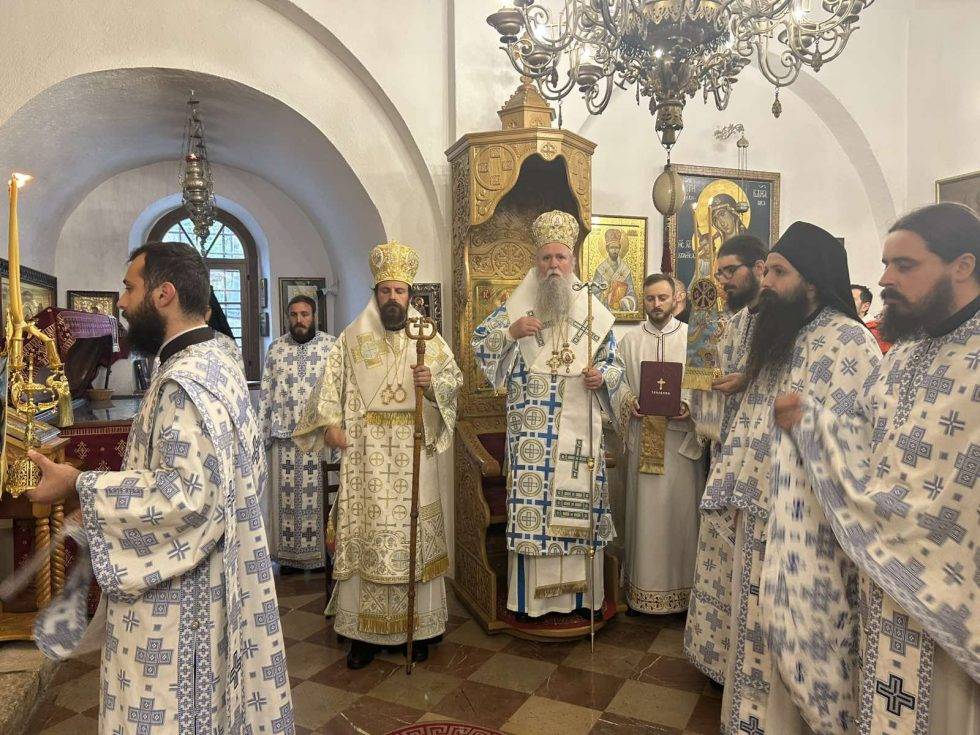

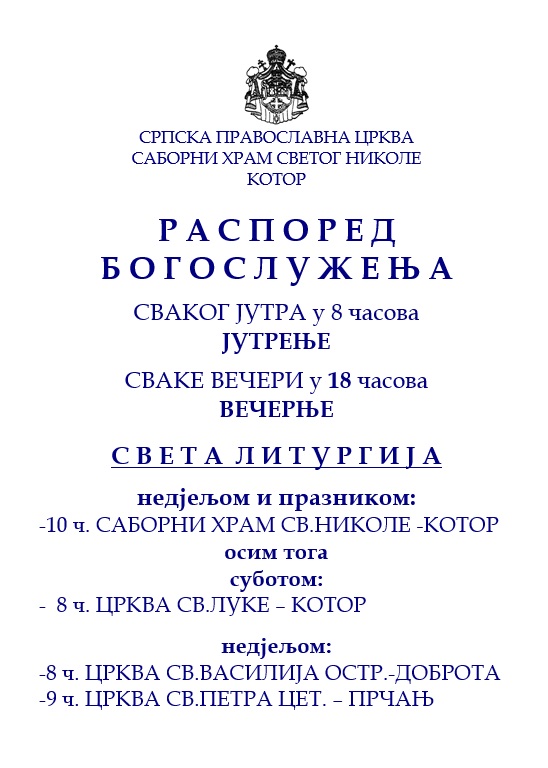
.png)